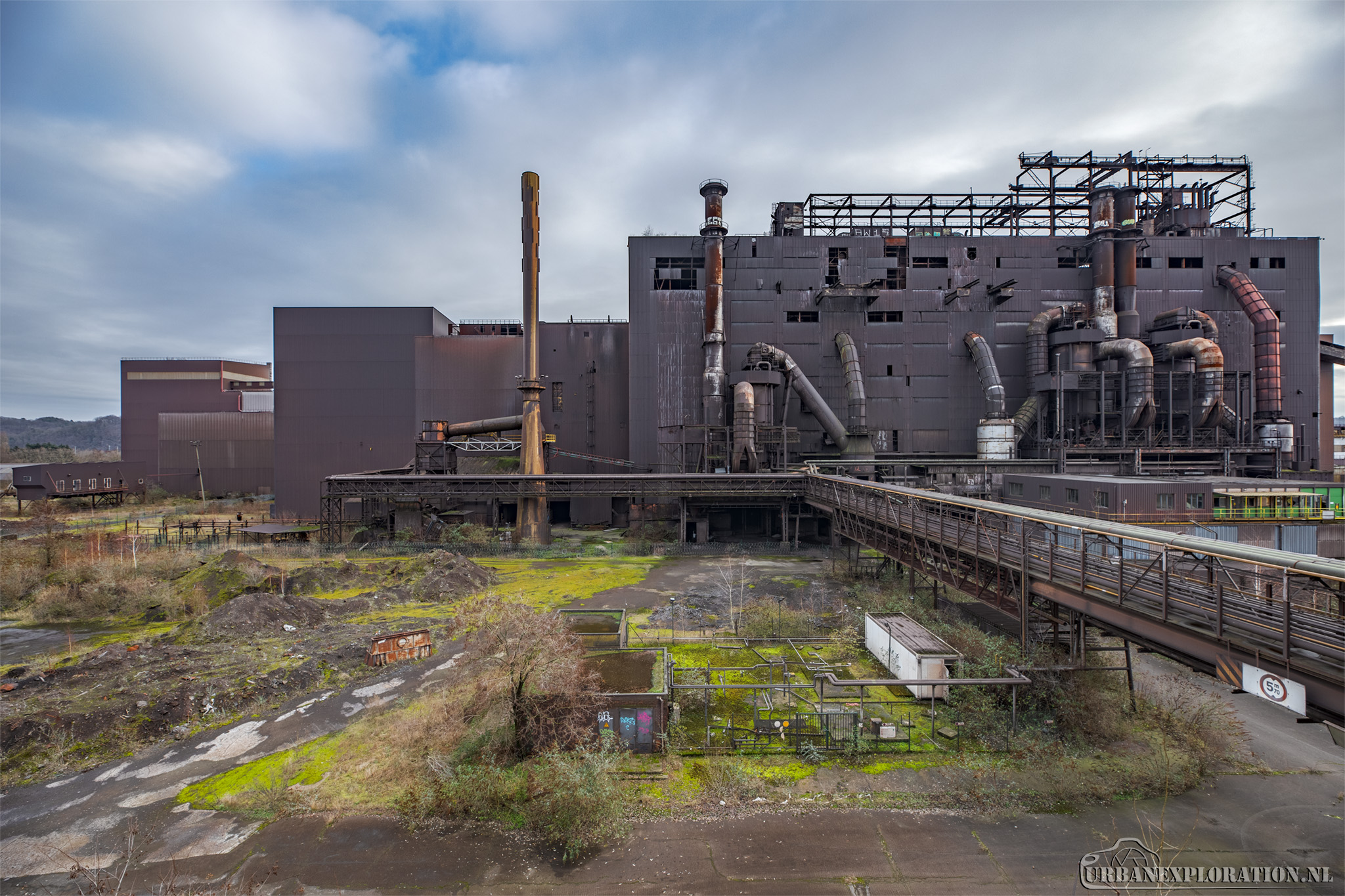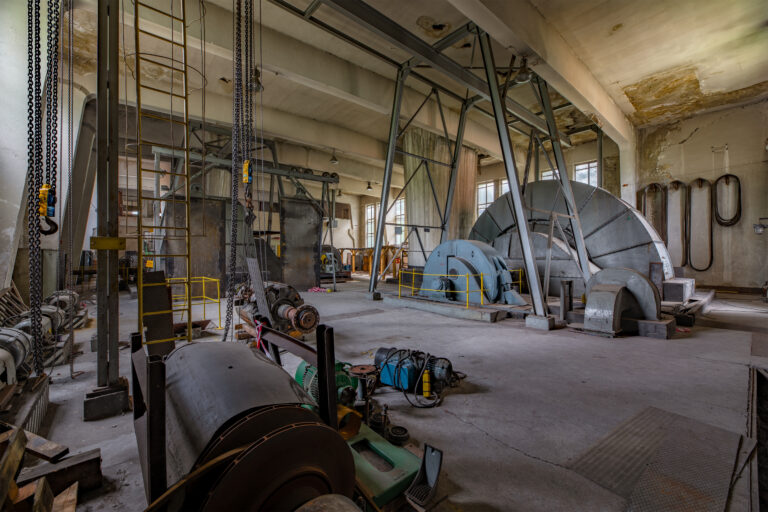Heavy Metal / Cockerill Sambre Chertal
The Cockerill Sambre plant in Chertal was a significant site in Belgium’s industrial history. Built in 1963 on an island in the Meuse River, the factory was originally established by the Société Métallurgique d’Espérance-Longdoz. It featured a modern LD converter and had an annual steel production capacity of 1.6 million tons. Pig iron was transported to the site by train from blast furnaces in other regions.
In 1970, Espérance-Longdoz was acquired by Cockerill-Ougrée-Providence, which later merged with Hainaut-Sambre to form Cockerill-Sambre in 1981. Over the following years, the company faced financial difficulties and restructuring, resulting in significant job losses. In 1999, it became part of the French steel group Usinor, which later merged into Arcelor and eventually became part of ArcelorMittal.
The Chertal plant was decommissioned in the 2010s and fell into disuse. Among urban explorers, it gained the nickname “Heavy Metal” due to its vast industrial scale and atmosphere. In 2022, a phased demolition process began, including asbestos removal, dismantling of equipment, structural deconstruction, and soil remediation. This process is expected to continue through 2026.
The site remains an impressive symbol of the region’s industrial legacy and continues to attract interest from industrial archaeology and photography enthusiasts.

- Visited - 2015,2023
- Defunct - 2010
- Status - Demolished
- Country - Belgium




















































